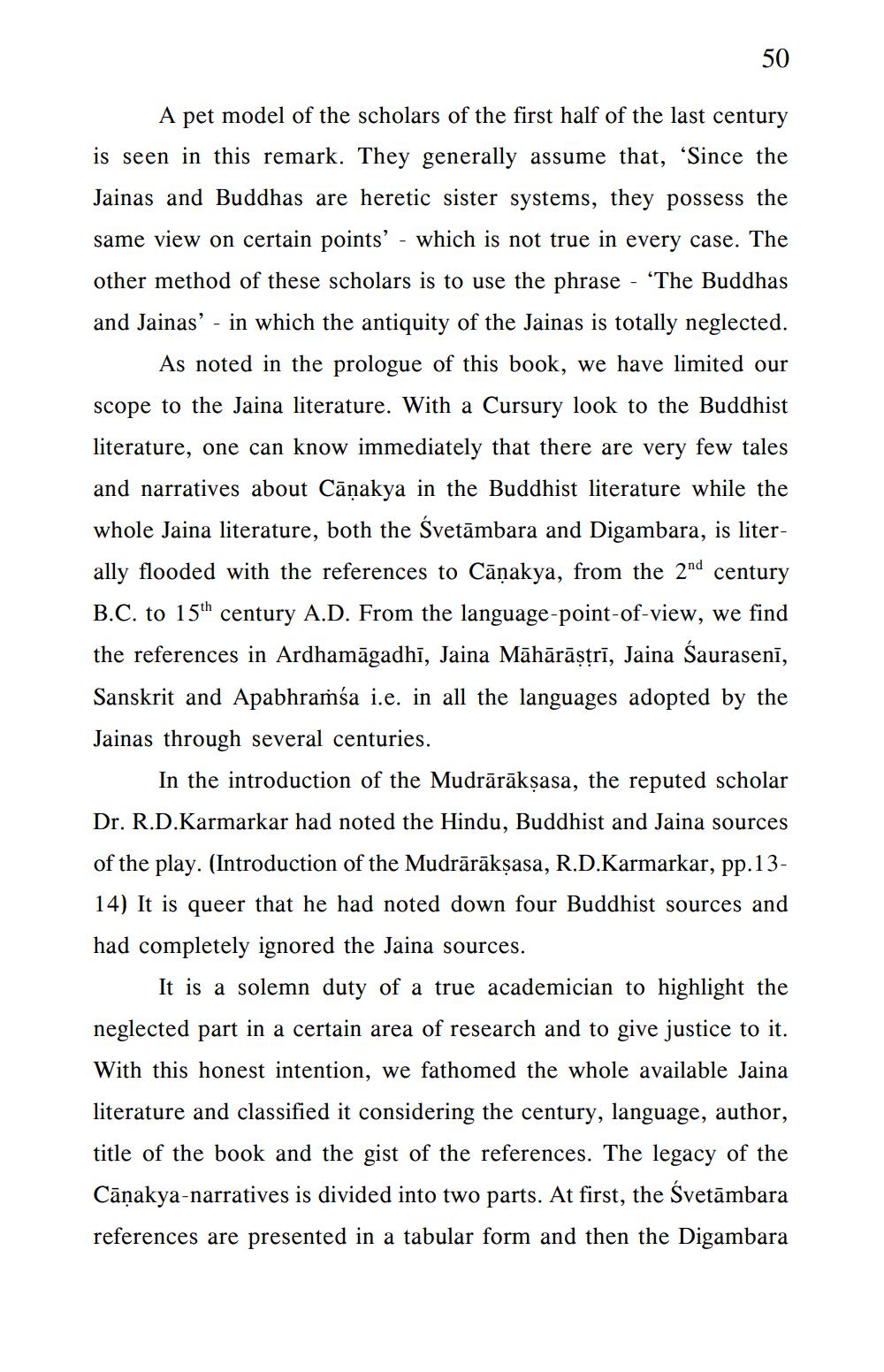________________
50
A pet model of the scholars of the first half of the last century is seen in this remark. They generally assume that, 'Since the Jainas and Buddhas are heretic sister systems, they possess the same view on certain points' - which is not true in every case. The other method of these scholars is to use the phrase - 'The Buddhas and Jainas' in which the antiquity of the Jainas is totally neglected.
As noted in the prologue of this book, we have limited our scope to the Jaina literature. With a Cursury look to the Buddhist literature, one can know immediately that there are very few tales and narratives about Cāṇakya in the Buddhist literature while the whole Jaina literature, both the Svetambara and Digambara, is literally flooded with the references to Caṇakya, from the 2nd century B.C. to 15th century A.D. From the language-point-of-view, we find the references in Ardhamāgadhī, Jaina Māhārāṣṭrī, Jaina Śaurasenī, Sanskrit and Apabhraṁśa i.e. in all the languages adopted by the Jainas through several centuries.
In the introduction of the Mudrārākṣasa, the reputed scholar Dr. R.D.Karmarkar had noted the Hindu, Buddhist and Jaina sources of the play. (Introduction of the Mudrārākṣasa, R.D.Karmarkar, pp.1314) It is queer that he had noted down four Buddhist sources and had completely ignored the Jaina sources.
It is a solemn duty of a true academician to highlight the neglected part in a certain area of research and to give justice to it. With this honest intention, we fathomed the whole available Jaina literature and classified it considering the century, language, author, title of the book and the gist of the references. The legacy of the Caṇakya-narratives is divided into two parts. At first, the Svetambara references are presented in a tabular form and then the Digambara




